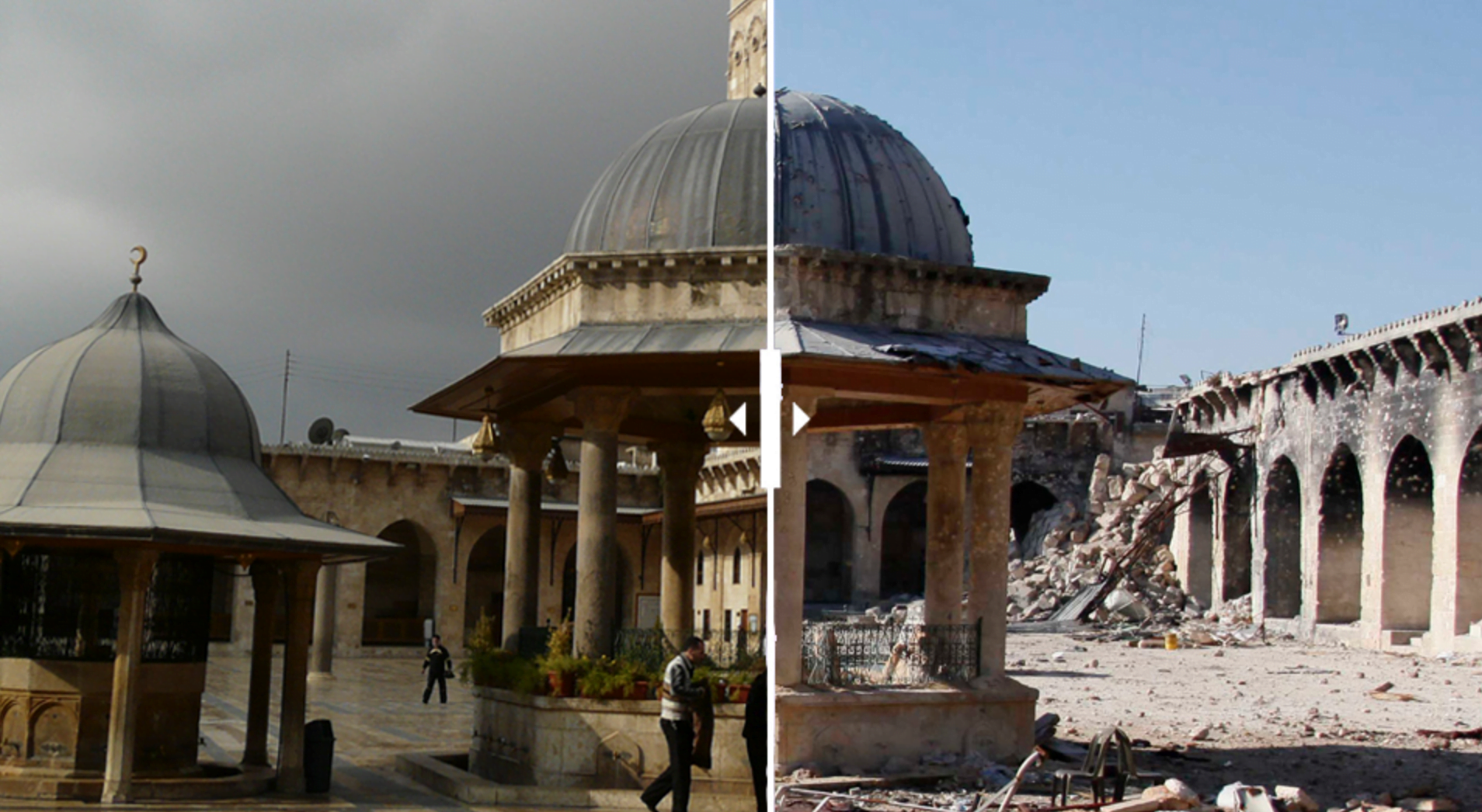Google ‘Aleppo’ and you will read about an ancient city lying at the end of the Silk Road trade route that brought goods and people across the world for over a millennia. Aleppines have looked at the yellow walls of Aleppo Citadel and visited the market Al-Madina Souk for longer than most cities have existed — it has been inhabited since perhaps the 6th millennium BC.
Today, a Google Image search of Aleppo offers the choice ‘Before and After’— photograph after photograph illustrating the impact of the ongoing Syrian Civil War on the city and its people. The contrasts are devastating and further evidence of the conditions driving the global refugee crisis. But a group of Aleppines and other experts are thinking about the future of the ancient city with the voices of the people usually excluded from reconstruction – they have designed the Aleppo Project.


Large sections of Aleppo are being destroyed during the Syrian conflict. Since 2012 it has been divided into a snail-shaped arrangement of rebel, regime, and ISIS strongholds. Homes, schools, clinics are now only dangerous, grey rubble, and in 2013 Aleppo University was bombed by government forces. This month there are reports of thousands fleeing after regime fighters attempted to advance on rebel positions. Some residents flee to the countryside, some leave Syria altogether. Others stay, keen to carry on in their jobs or studies, unwilling or unable to leave their lives behind them. Many hope to one day return to resume their normal lives in their homes.
What will we do on the day after the war ends? – This is the question that the Aleppo Project aims to address. Based at the Central European University in Budapest, Hungary, in collaboration with the Graduate School of Architecture, Planning and Preservation at Columbia University in United States, it combines academic research with student input and practitioners.
Armenak Tokmaijan, a research fellow on the project, became involved in the project after living most of his life in Aleppo. He explained, “I consider Aleppo a dear city to me. I have beautiful memories and it is really sad to see my city being destroyed. There are many projects which focus merely on the violent side of the conflict. We of course study the ongoing violence in Aleppo region but we also think post-violence phase and reconstruction.”
Aleppo Project invites residents, former residents, and professionals to contribute their knowledge of the city. This is building a map of Aleppo districts — documenting destroyed buildings, social centers, cafeterias according to people who live and have lived there. This may also help to record buildings that have become dangerous due to mines or unexploded bombs — an issue that has plagued other cities recovering from conflict. More than 1,200 people have been surveyed to date, including refugees whose ability to otherwise shape the future of the city is severely limited by living in camps or in other precarious conditions. The Aleppo Project also hopes to learn lessons from other cities that have been rebuilt by collecting policy papers and expertise.
For some Syrians, it feels premature and insensitive to look at post-war reconstruction. Faced with reality of thousands of deaths, an exodus of population, and the trauma of separated families and uncertainty, shouldn’t the only priority be to find a solution to the conflict? Armenak disagrees: “Other cases such as Sarajevo and Beirut show that when the war ended, no one was ready for reconstruction. Huge corporations took over the process and disregarded the local culture and history. They followed their capitalist interests. We are trying to avoid this in Aleppo. This project is a contribution in that direction.”
The global focus on the refugee crisis has created an image of a deserted Syria, a country whose citizens are forced to abandon it seemingly without hope. Initiatives like the Aleppo Project show that there is a future Syria to plan for and to build – and that the refugees who are portrayed as helpless and voiceless are actually key agents in that future.
